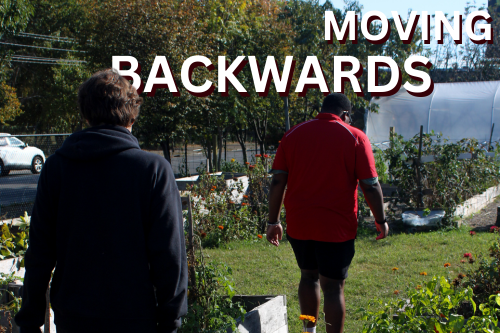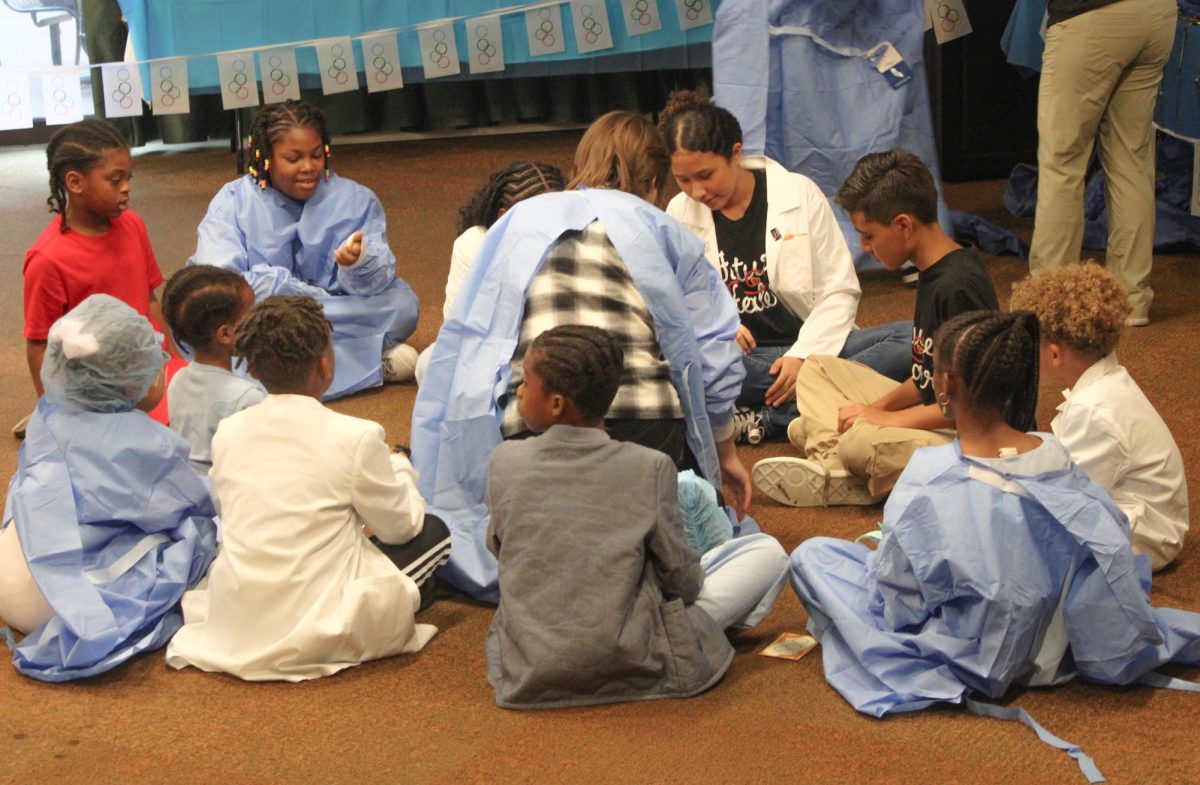“I was 15 and no one really believed in me.” She traded prom for pacifiers, and exams for an epidural. The life of going to football games and homecoming parties was over. Just like that, she had to become an adult.
Her parents were concerned. Her classmates distanced themselves. Besides being a pregnant teen, there was something else that made her situation unusual: Haley Gordon — a freshman at Moore Traditional High School — decided to give birth at home.
“The medical professionals told me that a home birth was impossible,” she said. “They said that if I wanted to make sure that she was safe, that the best way to do it was to be in a hospital because of my medical condition,” referring to the stress-induced seizures she occasionally experienced.

Gordon watched as her daughter Brittany — now three — skipped around the room, her bright pink bows bounced up and down.
“I had a few family members who were definitely shocked to hear that I wanted to have a home birth and even tried to discourage me from my decision,” she said, smiling while Brittany pretended to be a cowgirl riding on her toy horse.
Popular culture depicts women who deliver outside of a hospital as hippies with dreads who play in drum circles 24/7. But in reality, alternative birthing methods are on the rise among conventional women and families. According to the Association for Schools and Programs of Public Health, the percentage of out-of-hospital births in the U.S. “increased in the last decade by 72 percent from 0.87 percent to 1.50 percent.”
Whether or not we think about it every day, many people reading this will take on the responsibility of parenthood in the next 10 years. According to the National Center for Health Statistics, the average age of pregnant women in Jefferson County was about 26 as of 2014. Sooner than we realize, many of us will trade desk chairs for high chairs. Like Gordon, many young adults will be faced with the tough decision of how to bring their child into the world. However, without proper information about these non-traditional — basically, not in a hospital — birthing techniques, women can’t make an educated decision on what method is right for them and their babies.
According to a 2012 study by Dr. Marian MacDorman, a research professor at the Maryland Population Research Center, roughly 90 percent of home births were planned with the assistance of some sort of medical professional.
“Having a home birth was just a better fit for me. Being in your own environment and your own home is more comfortable than being in some sterile hospital room,” said Mandi Guthrie, mother of four.
Guthrie is one of the many women right here in Louisville who planned a home birth with a local midwife and doula. A midwife is a professional that specializes in pregnancy and childbirth, playing the role of nurse and ally. They are trained to recognize the variations of a labor process that could be potentially dangerous. If an expectant mother is extremely young or has a medical condition that could complicate the birth, like Gordon had, the midwives categorize them as high-risk patients and typically recommend a supervised hospital birth with updated technology and medication. While a midwife deals with the physical aspect of the birthing process, a doula — or a birthing companion — provides mental stability to the mother during and after her labor. These professionals work together to strengthen a woman’s support system in her birthing journey.
“At times I thought I was going to die, but then my doula would remind me that my body was meant to do this,” Guthrie said. “She would always say, ‘Your body knows what to do. This is normal, this is natural.’ She was soft-spoken and calm and exactly the type of person you would want in that experience.”

For many mothers like Guthrie, bonding with the newborn child after the birth is one of the most important aspects of the birthing process. Guthrie’s midwife immediately laid the newborn in her outstretched arms. Everyone left the room so that Guthrie could be alone with her newborn child, still connected by the umbilical cord, for an hour after the birth.
“Those moments right after were really sweet to me where you are just sweaty and hot and tired but you have worked towards this precious little baby,” she said. Guthrie appreciated that her midwife and doula allowed her to experience those first key minutes privately
At the time, Guthrie and her husband paid about $500 for a doula and about $2,500 for a midwife. According to Fair Health, a non-profit organization, the average cost of a normal hospital birth in Kentucky is $5,905. In the U.S., many health insurers don’t cover the cost of midwives, so many women have to pay out of pocket for their birthing services. According to the The Big Push For Midwives, a national campaign that strives to eliminate the stigmas against midwifery, many health insurers don’t cover home births like they cover hospital or clinic births. In fact, only New Hampshire, New Mexico, New York, and Vermont require insurers to cover home births at all. Expectant mothers already have the pressure of enduring a labor on their conscious, the last thing they need is the threat of looming medical bills not covered by their insurance.
Gordon was scared. Scared about going into labor and bringing a child into the world. She was 15 and didn’t know the first thing about becoming a mother; she was practically a child herself. So, like so many other new mothers, she turned to online articles to calm her nerves. That’s how she stumbled upon home births.
From Gordon’s perspective, she believes that natural births and home births should be normalized as much as hospital births are.
“Our ancestors did it,” she said. “Women are strong enough to do it. Every mother should have that right to choose what they want to do with their own birth.”
Gordon had an interesting birthing experience in that she went through a natural home birth and a medicated hospital birth within the same labor. Because Gordon suffers from seizures, her body would have been under too much stress to have a healthy home birth. She endured a home birth for as long as she could, but at the last minute, Gordon had to travel to a hospital for an epidural.
“I just wanted to be in a tub of water surrounded by my closest family members.” she said. Gordon recalls that accepting the trip to the hospital was one of the hardest things she had to come to terms with.
Gordon felt she’d made the right decision opting to give birth in her home instead of a hospital, but that doesn’t mean everyone in her life jumped on board. She said that many people who were close to her were unsupportive of how she wanted to bring her child into the world.
In Kentucky, women have the right to choose between different birthing options. But in the last two generations, home births have become a less accessible choice.
According to the Kentucky Cabinet for Health and Family Services, as of 2016, a person shouldn’t practice “lay-midwifery” in the state unless they have a “valid and effective” permit. But, the cabinet then points out that applications to practice midwifery “shall not be accepted after April 9, 1975.”
Kentucky passed this law 43 years ago and since then, hundreds of midwives have been unable to obtain licenses to legally practice their trade. Some midwives who practice unlawfully could potentially be arrested. This legislation has led some women to view home births as disreputable or almost shady. However, some Kentucky senators are trying to pass bills to legalize certain forms of midwifery throughout the state.
Tom Buford, a senator from Nicholasville, filed Senate Bill 134 with the Kentucky Senate in 2018 to allow the state to issue permits to Certified Professional Midwives (CPMs). The bill passed 29-8 in the state senate and is waiting to be received in the house. CPMs learn through apprenticeships — which usually last three to five years — with other fully certified midwives. CPMs must meet the standard set by the North American Registry of Midwives. They have a lower client load (averaging 3-6 births a month) than obstetricians which allows for more personalized care with the mothers.
On the other hand, Certified Nurse Midwives (CNMs), who are fully licensed in Kentucky, are the most respected among physicians and obstetricians because of their advanced degree, similar to that of a nurse practitioner. They work more with women delivering in a hospital, but occasionally perform home births. No matter what type of midwife a woman may choose, permitting CPMs to legally practice would widen the choices open to pregnant women throughout the state.
When it comes to birthing options, for women like Gordon and Guthrie, all of this comes down to a matter of choice.
“I hope that my girls will be able to see home birth as a very normal option for them,” Guthrie said.
Whether women are afraid of the possible pain or not having an OBGYN by their side, home births still only make up a meager 1.5% of all U.S. births. Even though information about this non-traditional birthing technique might not be crucial to the lives of our readers right now, you deserve to be informed about an unconventional option you might utilize in your future — the time for big life decisions is right around the corner.





















